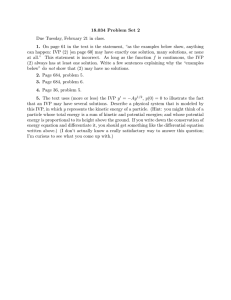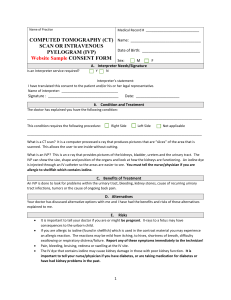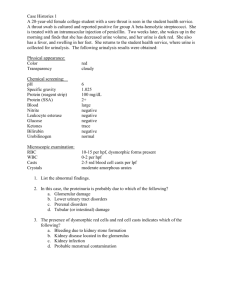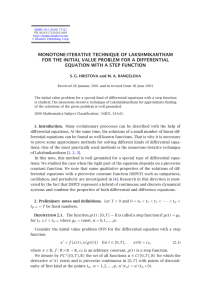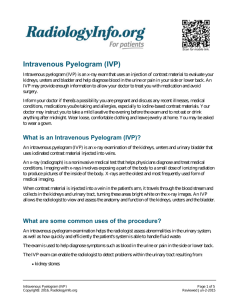rad tech 122 –urinary system – study guide
advertisement
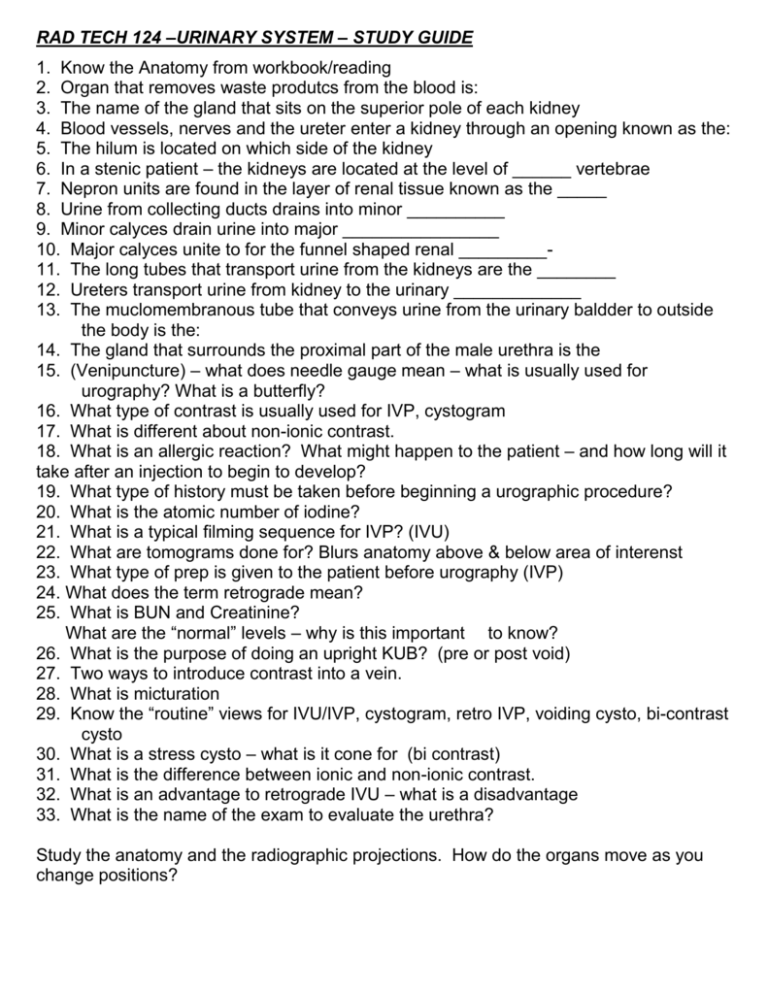
RAD TECH 124 –URINARY SYSTEM – STUDY GUIDE 1. Know the Anatomy from workbook/reading 2. Organ that removes waste produtcs from the blood is: 3. The name of the gland that sits on the superior pole of each kidney 4. Blood vessels, nerves and the ureter enter a kidney through an opening known as the: 5. The hilum is located on which side of the kidney 6. In a stenic patient – the kidneys are located at the level of ______ vertebrae 7. Nepron units are found in the layer of renal tissue known as the _____ 8. Urine from collecting ducts drains into minor __________ 9. Minor calyces drain urine into major ________________ 10. Major calyces unite to for the funnel shaped renal _________11. The long tubes that transport urine from the kidneys are the ________ 12. Ureters transport urine from kidney to the urinary _____________ 13. The muclomembranous tube that conveys urine from the urinary baldder to outside the body is the: 14. The gland that surrounds the proximal part of the male urethra is the 15. (Venipuncture) – what does needle gauge mean – what is usually used for urography? What is a butterfly? 16. What type of contrast is usually used for IVP, cystogram 17. What is different about non-ionic contrast. 18. What is an allergic reaction? What might happen to the patient – and how long will it take after an injection to begin to develop? 19. What type of history must be taken before beginning a urographic procedure? 20. What is the atomic number of iodine? 21. What is a typical filming sequence for IVP? (IVU) 22. What are tomograms done for? Blurs anatomy above & below area of interenst 23. What type of prep is given to the patient before urography (IVP) 24. What does the term retrograde mean? 25. What is BUN and Creatinine? What are the “normal” levels – why is this important to know? 26. What is the purpose of doing an upright KUB? (pre or post void) 27. Two ways to introduce contrast into a vein. 28. What is micturation 29. Know the “routine” views for IVU/IVP, cystogram, retro IVP, voiding cysto, bi-contrast cysto 30. What is a stress cysto – what is it cone for (bi contrast) 31. What is the difference between ionic and non-ionic contrast. 32. What is an advantage to retrograde IVU – what is a disadvantage 33. What is the name of the exam to evaluate the urethra? Study the anatomy and the radiographic projections. How do the organs move as you change positions? RAD TECH 124- HEPATOBILIARY SYSTEM – STUDY GUIDE 1. Know the 4 body types and how that effect the position of the GB 2. What is the largest organ in the abdominal cavity? 3. What is the radiographic significance physiologic function of the liver in production of_____ 4. Know the biliary ducts – and which connect to each other 5. Name for the opening for the Ampula of Vater 6. Which organ in the abdominal cavity produces insulin? T or F : 7. The pancreas cannot be demonstrated using plain radiography 8. The spleen is an organ of the lymphatic system 9. The pancreas and liver secrete specialized digestive juices into the small intestine. 11. Can a patient’s (M & F) gonads be shielded for a ERCP study? why or why not? 12. Which projection of the GB will demonstrate stratification of stones? 13. When you look at images of the biliary ducts -how can you tell the difference between an ERCP & T-Tube cholangiogram ?

